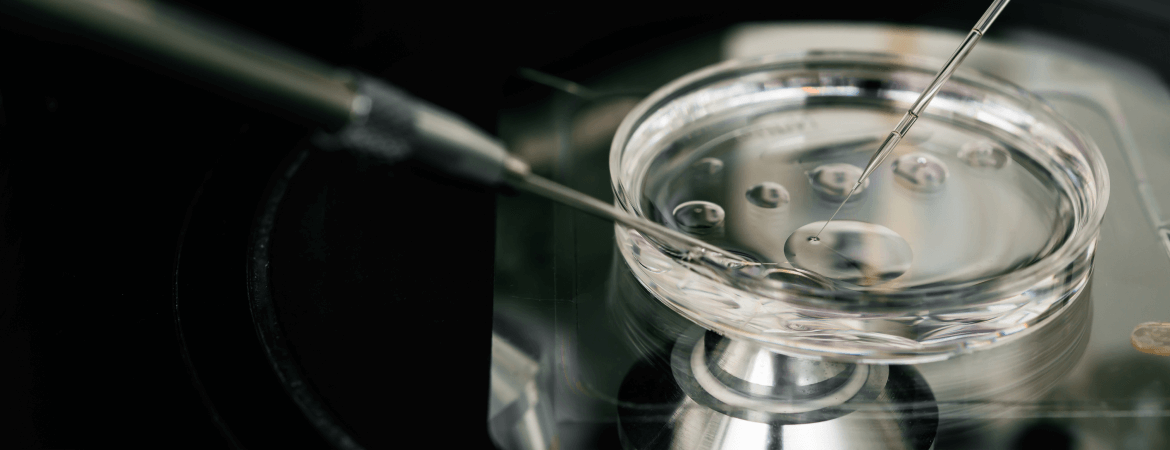
How does IVF work?
Starting a family can be one of the most rewarding and fulfilling experiences in life. However, for some people, getting to the first milestone − that is, actually getting pregnant − can be a most challenging journey.
In-vitro fertilisation (IVF) is a popular option for those who are unable to conceive naturally. The good news is that for many, IVF is a resounding success, but there are several factors to consider, such as age, cause of infertility and previous pregnancies.
Let’s get into the basics of IVF – what to do before starting the procedure, and what happens if it doesn't work the first time.
So, what exactly is IVF?
IVF, or in-vitro fertilisation, is an assisted reproductive technology (ART) that involves fertilising an egg with sperm outside of the body in a laboratory dish. Once fertilised, the embryo is transferred into the uterus with the goal of implantation and a successful pregnancy.
When should I start IVF?
Before beginning IVF, you and your partner will need a series of thorough medical evaluations to determine the cause of infertility. This typically involves blood tests, ultrasounds and a physical check-up to assess the health of your reproductive organs. Women will also receive a full medical work-up from a gynaecologist to check the health and functionality of their hormone levels, uterus and fallopian tubes. The man will also have his sperm health assessed.
In some cases, couples or solo parents may also need to undergo genetic testing to identify possible hereditary conditions that could impact on the baby's health.
The IVF process in four steps
1. Superovulation
Superovulation is the first step in the IVF process after completing the medical evaluation. The goal is to stimulate the ovaries to produce multiple eggs, which is accomplished with a combination of hormone medication injections. The aim is to produce several mature eggs, hopefully increasing the chances of a successful pregnancy.
2. Egg and sperm retrieval
Once the eggs are mature, they are collected through a procedure called follicular aspiration. A thin needle is inserted through the vaginal wall to reach the ovaries and retrieve the mature eggs. After the eggs are extracted, they are placed in a special culture medium in a laboratory. At the same time, your partner will provide a semen sample, which will then be processed through a high-speed wash and spin cycle to isolate the healthiest and most viable sperm. This sperm is used to fertilise the collected eggs in a laboratory dish. The fertilised eggs are monitored closely over the next few days to ensure that they develop into healthy embryos before being transferred back into the uterus during a separate procedure.
3. Insemination
The collected eggs are combined with sperm in a laboratory dish to fertilise them. The process typically takes several hours, during which time the sperm will swim towards the eggs and try to penetrate their outer layer to fertilise them. However, in some cases, the doctor may opt for intracytoplasmic sperm injection (ICSI). This involves the injection of a single sperm directly into an egg, bypassing the need for the sperm to penetrate the egg's outer layer. ICSI is often used when there are issues with the quality or quantity of the sperm or when fertilisation has been difficult in previous IVF cycles.
4. Embryo transfer
After fertilisation, the developing embryos are closely observed for several days to ensure that they are progressing normally. Following this, the most viable embryos are carefully selected and transferred into the uterus via a thin catheter. The successful implantation of these embryos is a crucial step for a workable pregnancy to occur.
After the procedure
Be aware of the potential risks and side-effects of IVF. Some women may experience bloating, cramping or mood swings, from the hormone medications and stimulation of the ovaries. There is also a slight risk of infection or bleeding during the egg retrieval procedure.
While IVF can be an effective method for getting pregnant, try to be realistic. IVF may not be successful on the very first try. However, with multiple cycles, the success rate should increase. Discuss all the probabilities with your doctor and remain hopeful yet practical. Remember, the process can be very expensive, so you’ll need to consider your savings and budget.
Good to know
For parents who’d love to welcome a little bundle of joy, IVF could be your light at the end of the tunnel. It’s a viable option and many parents are successful. Take care of your health and get good advice before making this important decision.
Disclaimer
This article is for informational purposes only. Always check with your doctor or medical practitioner about any health concerns, before embarking on any fitness or nutrition programme, and usage of any medication.
